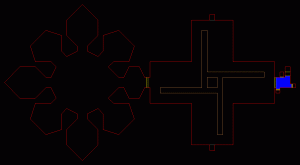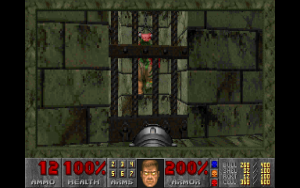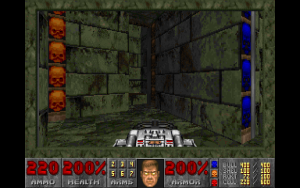I remember being incredibly excited to finally delve into the code of the grandfather to all FPS, which had turned out to be surprisingly more in depth and puzzle-like than what I’d expected from such a title and outward appearance. I wanted to create some sprawling dungeon or giant temple, something notably un-Doom-like despite usage of default textures. I remember the day we first downloaded Slade, I’d messed around with sky textures on columns descending from the ceiling, and the resulting abstract surreal columns of negative space made me excited to really create some novel stuff. Ideas like enormous Cacodemons firing Touhou-esque bullet hell waves of projectiles and lumbering Souls-like melee enemies were at the top of my list. Unfortunately, this time also marked a pretty rough patch I had in the middle of the quarter, where absences and late work built up and caused a bit of black hole of stress and backed-up workflow.
The resulting level I actually ended up making definitely carries a feeling of restricted creative flow, but I still think I managed to get some good ideas through in it. Dramatic lighting was one part I really wanted to learn how to convey well in the DOOM engine, and I honestly found the area by area lighting system to actually be more outright effective and efficient at times than Unity’s 3d lighting.
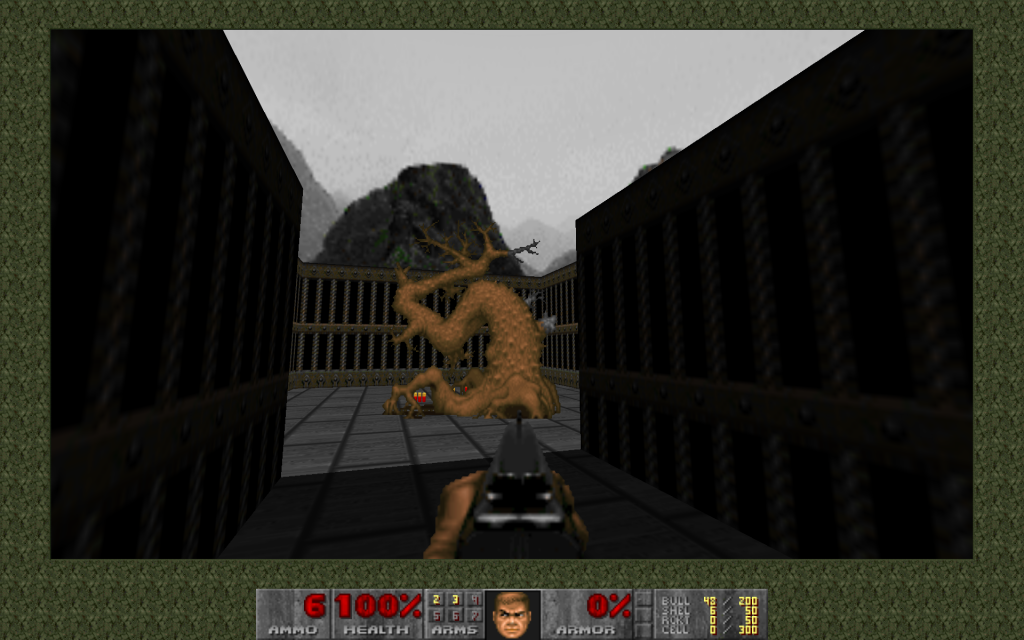
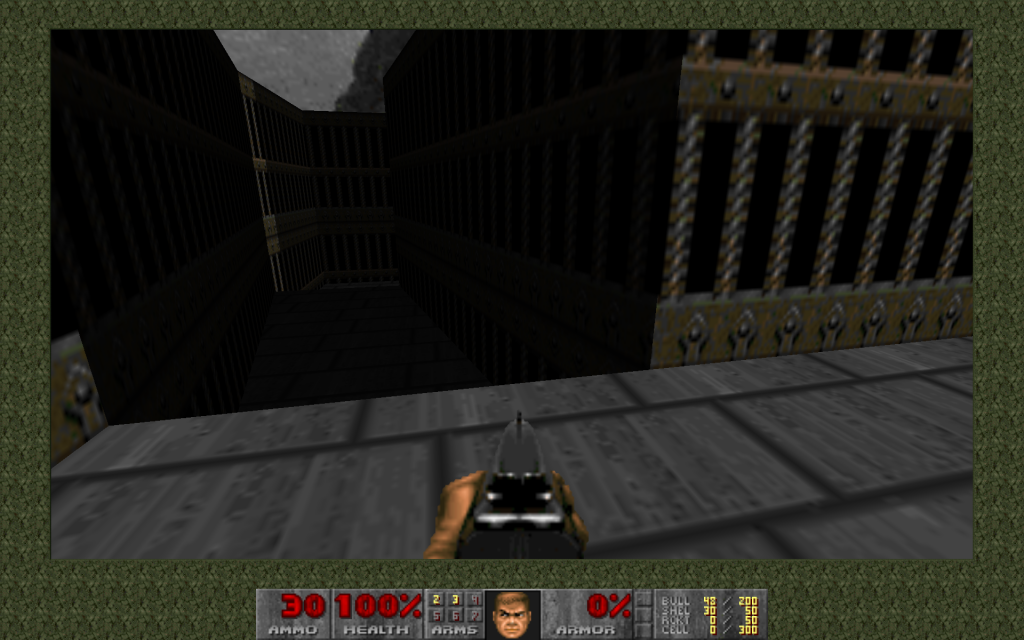
The other aspect I wanted to work with that DOOM really lacked was the verticality, though that’s more a factor of GZ Doom allowing for new features like vertical mouse movement than a creative decision in the original game.

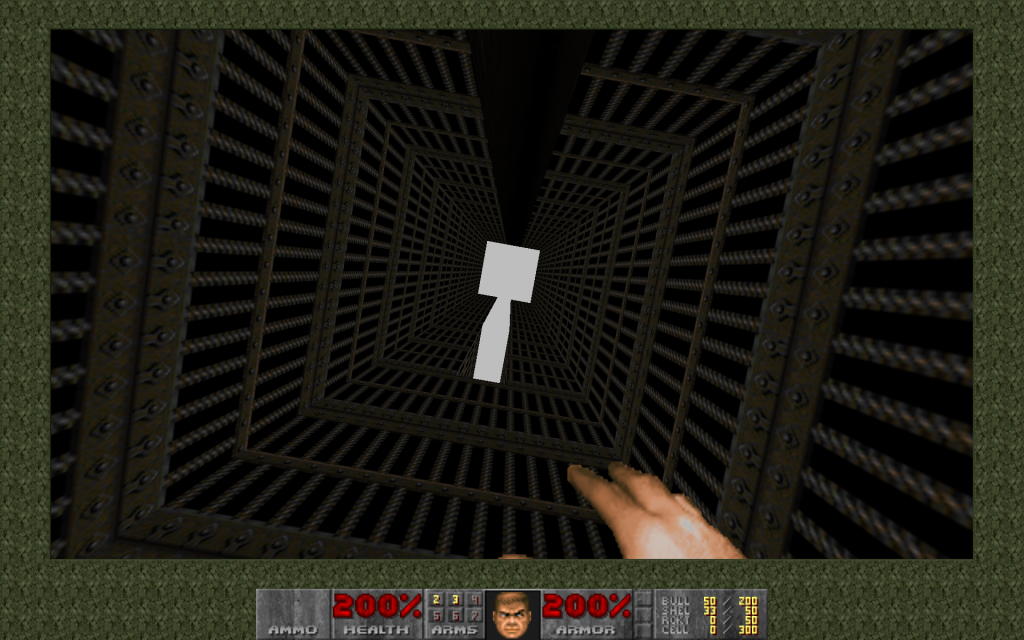
Though it was technically very possible and straightforward to implement, one large flaw I noticed was that you immediately start to see how enemies and sprites were 2d images on a horizontal axis. Both of these design aspects would be revisited in my final project.


